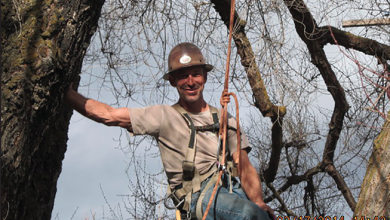Early Warning Systems…
Trees, being the benevolent sentient beings that they are, tend to give us a little warning when they are stressed. Sometimes this warning is loud and clear, sometimes not…
A sudden shift in lean, for example, should be a screaming red flag! How can you tell when this happens? Like watching your child graduate from college and wondering where all the time went, the subtleties get a little clouded with time. It is a good idea to chronicle that time with pictures, dated of course. Take a photo of your beloved tree, date the photo, and the spot where you shot the photo from. Down the road you will have a reference point from which to compare. Just hold the picture up and make note of any change in your trees attitude. Boom, Simple!
Past performance is not always indicative of future results, but it is a starting point. Early leaf drop in the late summer is USUALLY not as serious as the same symptom in the spring months. What does this mean? It depends on what kind of tree we are talking about. Springtime moisture assists fungus in its mission to have a close relationship with your trees twigs, buds, and new leaves in the form of Anthracnose. This disease rears its ugly head until the rains stop and the daily temps rise for the season. Affecting mostly Maples, Oaks, and Sycamores, it is usually not the end of the trees world, but it weakens them somewhat, and can disfigure them as well.
Mid to late summer leaf drop may be a sign of water stress, and we are talking about not enough, as apposed to too much. The big difference between the two types of defoliations is you can “fix” the lack of water issue, Anthracnose is here to stay and there isn’t really a cure.
If you notice a sudden change in your tree when there have been no changes to the cultural conditions such as water, elements, temperature etc. and no compaction of soils, construction impacts, or changes of soil grade, some detective work is in order here! Your tree is telling you to take a closer look…
Maybe an energetic gopher has been working overtime on your roots? Maybe a source of irrigation is on the fritz. Maybe it was downwind of a herbicide application. Whatever the reason, when you see a sudden change in attitude, it probably means something.
Vigorous sprouting in the stem or main branches that never occurred previously is another red flag! Again a yearly photo chronicle of your tree will help greatly in this instance.
Fruiting bodies such as mushrooms or conks on the stem or around the base is almost never a good thing, and should be addressed, pronto
Inky fluid on the stem is another not-so-good sign.
Increasing vigor, boosting the immune system, improving the cultural conditions of the root zone are some ways of combating the curve balls Mother Nature can throw your way.


